Санкт-Петербург

Russian cultural capital and gateway to Europe

Our first Russian stop on our 2004 Baltic tour was Saint Petersburg, at the far east of the Gulf of Finland. Known as Petrograd from 1914 until Lenin’s death in 1924, its name changed to Leningrad until the end of the Soviet Union in 1991. However, during Tsarist times, as now, it was named after Saint Peter. Like many great cities such as Amsterdam, Houston, Ho Chi Minh City and Washington DC, it is built on a swamp: there are canals criss-crossing the city and the tap water is undrinkable. The city is Russia’s major westernmost port, and for such a historic city is relatively new, having been founded in 1703. It was the national capital until shortly after the 1917 revolution, whereupon the business of running the country transferred to Moscow.
We stayed for three nights in St Petersburg in June, when the weather wasn’t cold, but wasn’t very warm either: we arrived from Finland in a shower of rain, setting the tone for much of the trip. It took some time to get our bearings, as we thought we’d arrived at Finland Station and hopped straight on the metro, but there was no English signage and I wasn’t fast enough at reading the twenty-plus letters of each station name before the train whizzed on. After eventually figuring out where we were, we arrived at Nord Hostel, our lodgings for the duration run by a hospitable lady named Marsha. It was as central as we could possibly have hoped for, being within the General Staff Building through the arch opposite the Winter Palace.

The Winter Palace was built during Tsarist times to be their residence during winter, while Saint Petersburg was the capital of Russia. It now houses the State Hermitage Museum, a vast collection of over three million items, including some of the world’s greatest art and treasures. We gained free entry with our student IDs and spent a day exploring what we could. To see the whole place would have required two or three days.
One of the grandest staircases in the palace, the Jordan Staircase is all gold and marble and normally swarming with people. I stalled while exiting at closing time to get this picture when it was more peaceful. It reminds me of a wedding cake.


The library inside the Hermitage is as wood-panelled and olde-worlde as you could wish for, one might even expect to see Harry Potter lurking about. We’d been hoping to see the Amber Room, but in those pre-smartphones bad old days, we didn’t know that it’s actually located at the summer palace thirty clicks away.
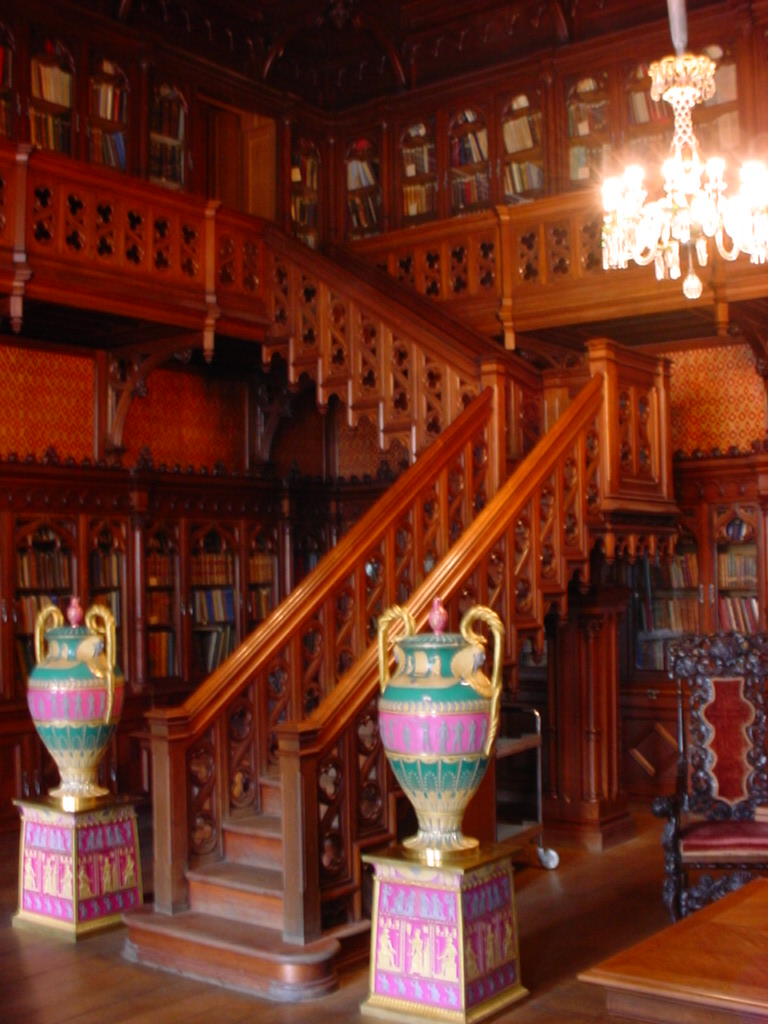

St George’s Hall was the official throne room of the Tsars, and at the time of our visit there was a glorious golden throne just waiting to be sat upon. Which would have been a very bad idea indeed. The double-headed eagle coat of arms was introduced in the late 15th century, and is still in use today. Double-headed eagles also appear on the coats of arms of Albania and Serbia.
Particularly impressive columns outside the Hermitage, at what used to be the main entrance. These date from 1851 and are properly known as Atlantes, the plural of Atlas, who held the world on his shoulders. Note the weedy tourists for scale.


The Hermitage Bridge connects the Hermitage Theatre and the Old Hermitage, crossing the Winter Canal, one of many throughout the city.
The General Staff Building faces the Winter Palace, and between the two is the broad Palace Square, which was being set up for a Paul McCartney concert at the time. Our hostel was just on the other side of the arch, which reminds me of the Rua Augusta Arch in Lisbon.
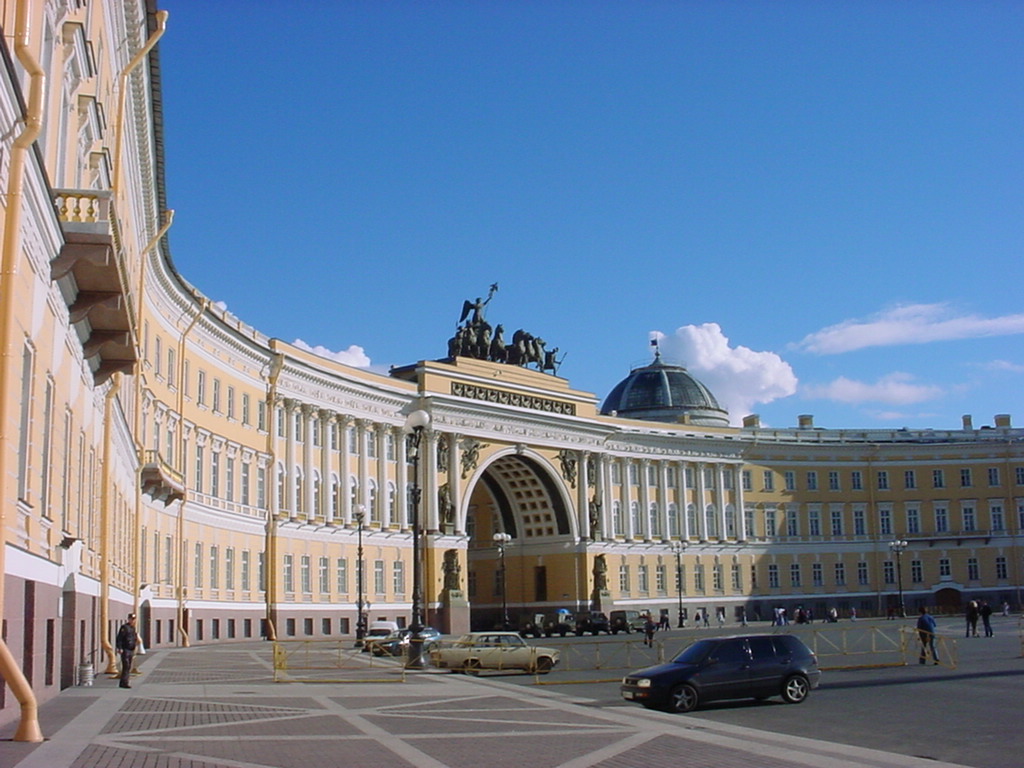

St Isaac’s Cathedral stands by the River Neva just next to the Winter Palace. We climbed up to the colonnade and walked around the dome, from which you get a very good view of the city. As with many other tourist attractions in Russia, we had to pay extra to take photos, or risk having our cameras relieved of us. It is the only cathedral I have seen with double glazing, and ranks in size close to St Peter’s in the Vatican. Completed in 1858, it has operated as a museum since 1931.
View from the top of Saint Isaac’s Cathedral across the unsurprisingly named St Isaac’s Square. The green-roofed building in the distance is Mariinsky Palace, seat of the regional parliament.


One of the many canals which cross Saint Petersburg, this is one of the larger ones and is technically a river, the Moyka, as seen from Zelonyy Bridge. The entire canal network is frozen over for the winter months. The canals were familiar to me from James Bond’s tank chasing escapades in Goldeneye.
The cruiser Aurora remains moored on the River Neva in the same spot she sat when firing the opening shot of the Russian Revolution in 1917. She now operates as a museum ship.

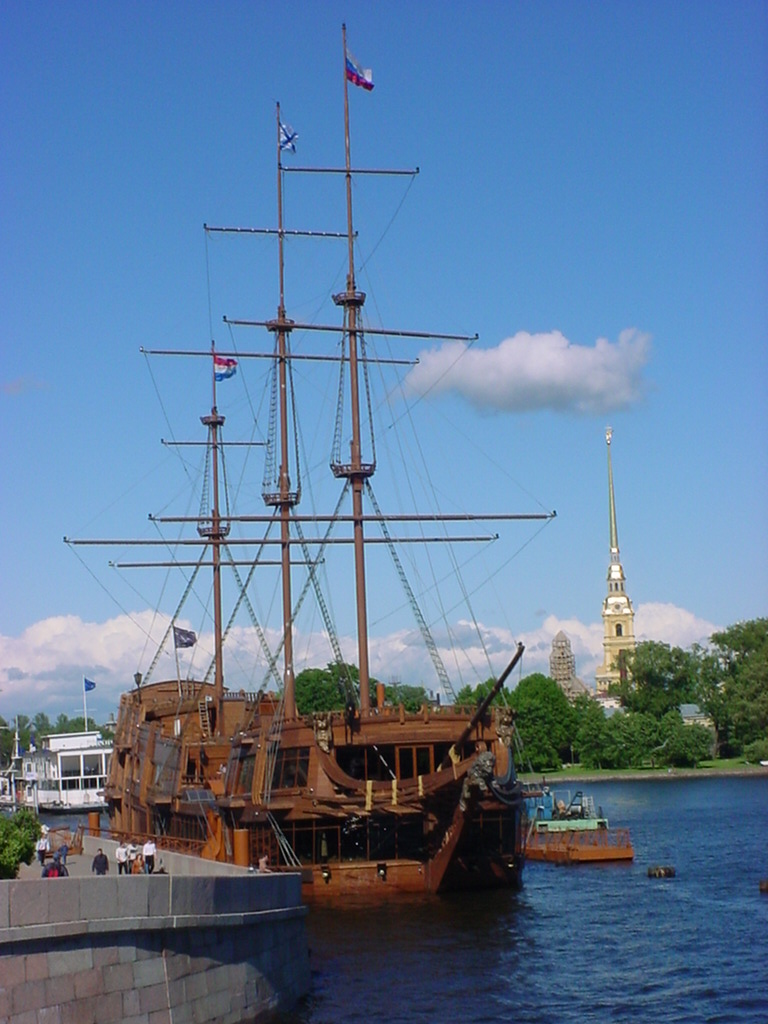
Another historic vessel is also moored on the banks of the Neva, this is the Flying Dutchman, or Letuchiy Gollandets to the locals, and hosts several restaurants. It may not be of quite such historic importance as Aurora.
Peter and Paul Fortress is the original fort of Saint Petersburg, with construction underway almost as soon as the city was founded in 1703. The fortress now mostly houses the museum of the history of the city.
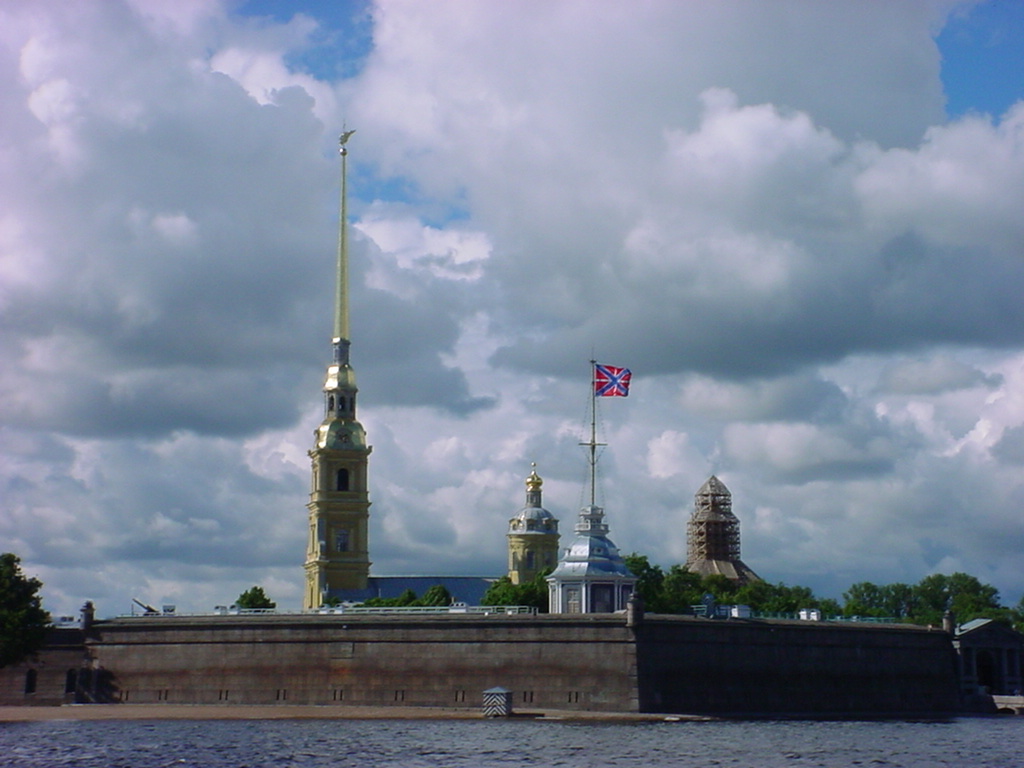

National flags fly over the lawns at the western end of the fortress.
The golden spire of Saints Peter and Paul Cathedral is the tallest in the centre of the city at over four hundred feet. Its iconic image appears on the fifty ruble banknote.


The interior of Saints Peter and Paul Cathedral is as opulent as one would expect of a Russian Orthodox cathedral of this vintage. All but two of the Russian emperors are buried within the cathedral, including Nicholas II and his family since 1998, long after their execution in 1918.
An inner-city beach looks across from the Peter and Paul Fortress, towards the south bank of the Neva River. The Winter Palace lines most of the river front, with St Isaac’s cathedral dome in the distance. One might even expect to see Rasputin floating by. During winter it’s possible to walk straight over the ice from here to the Winter Palace.

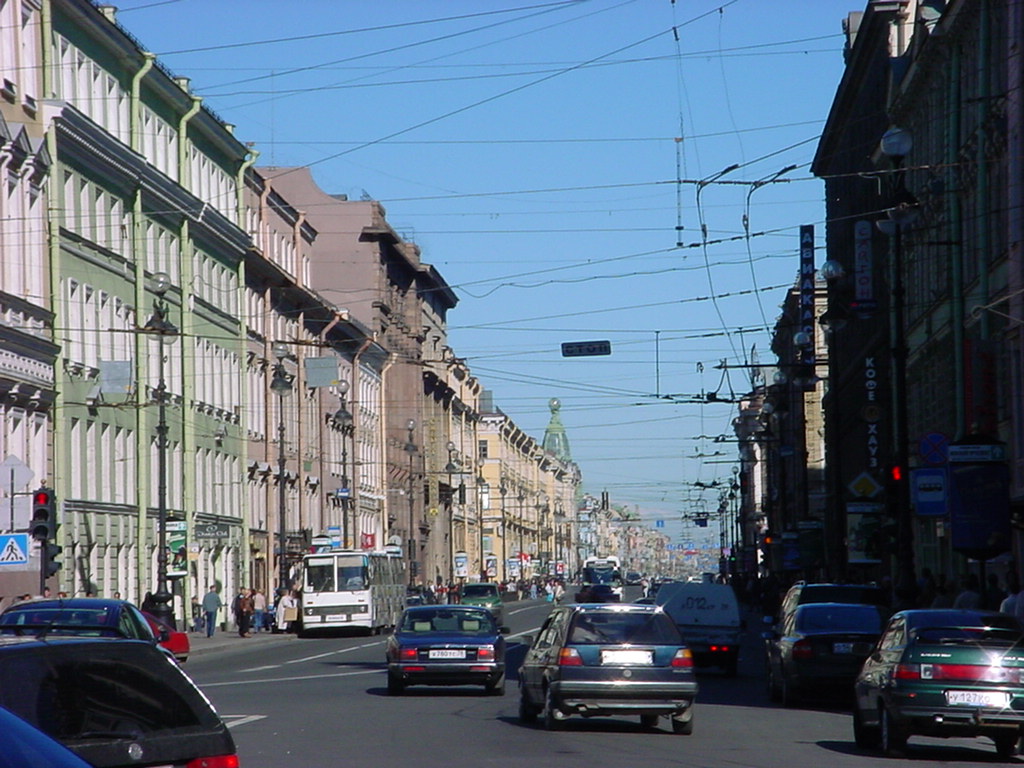
Nevsky Prospect is the main street of St Petersburg, we walked much of its length from the station to our hostel. It also hosts the Stroganoff Palace, which served us platefuls of the classic dish, tasty if not particularly warm or generous, nor cheerfully served.
St Petersburg is famous for its fountains, frozen in winter but splendid in summer. This is the fountain in front of the Admiralty Building, former headquarters of the Imperial Russian Navy.


A more unusual attraction in St Petersburg during the “White Nights” of the summer when it doesn’t get completely dark, is the raising of the bridges each night at about 1:30 am. They stay open for a few hours to allow ships to pass, but driving from one half of the city to the other is rendered impossible during this time. The sides of the river were crammed with people, mostly Russian tourists, watching the spectacle. This is Palace Bridge, with Kunstkamera visible behind, the oldest museum in the country.
The Church of the Saviour on Spilled Blood was built to mimic St Basil’s Cathedral in Moscow, and was constructed on the spot where Emperor Alexander II was assassinated in 1881, hence the blood reference. I took this photo around three in the morning with the sky lightening nicely – I didn’t pass this way during the day time.


A closing shot of the glorious Winter Palace, in as much of the dead of night as could be achieved in the Russian mid-summer.
Created 2004 | Updated 2015, 2024
